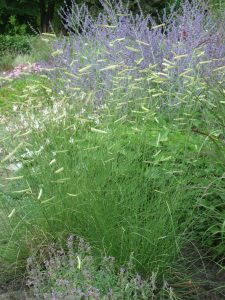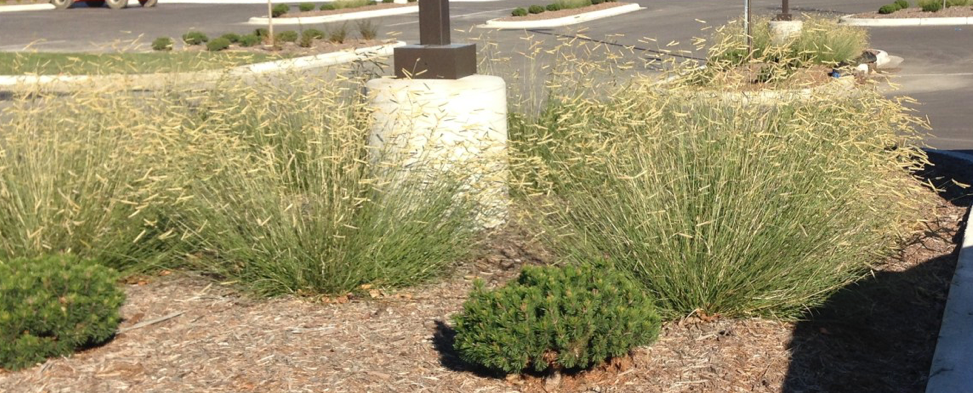Chapter 3. Common Native Grasses of the Northern Midwest
3.3 Blue grama

Bouteloua gracilis
Warm season; Perennial
Characteristics: 8–24”; irregular; flowers green to yellow; foliage gray-green; self-seeder
Growing Conditions: average to dry soils; drought tolerant: full sun; hardy zones 3–8
Blue grama has interesting seedheads that have been described as looking like tiny combs, eyebrows, or grasshoppers. Blue grama can handle hot and dry sites. It can be used for low maintenance or alternative lawns. Infrequent mowing, monthly or as little as twice a year, can maintain grasses, but broadleaf weed control may be necessary until grasses are established.
Nativars:
‘Blond Ambition’: Seedheads are yellow-green and are borne on stems 3’, taller than blue grama plants from the Midwest. Selection is from New Mexico and may have limited hardiness in colder zones, can easily be grown as an annual.
Associated Lepidoptera:
Species that feed on blue grama according to the literature are Oslar’s roadside skipper (Amblyscirtes oslari), Simius skipper (Notamblyscirtes simius), Mead’s wood nymph (Cercyonis meadii), Blake’s tiger moth (Grammia blakei), Assiniboia skipper (Hesperia assiniboia), Common branded skipper (Hesperia comma), Leonard’s skipper (Hesperia leonardus), Ottoe skipper (Hesperia ottoe), Pahaska skipper (Hesperia pahaska), Uncas skipper (Hesperia uncas), Ridings’ satry (Neominois ridingsii), Garita skipperling (Oarisma garita), and Rhesus skipper (Polites rhesus).

The non-technical term referring to the reproductive structure or inflorescence of a graminoid.
A cultivar of a native plant.
Refers to the zones in the USDA Plant Hardiness Zone Map used to determine which plants are likely to thrive in a certain location. The map is based upon average annual extreme minimum temperatures, divided into 10-degree F zones.
The order that includes butterflies and moths.

